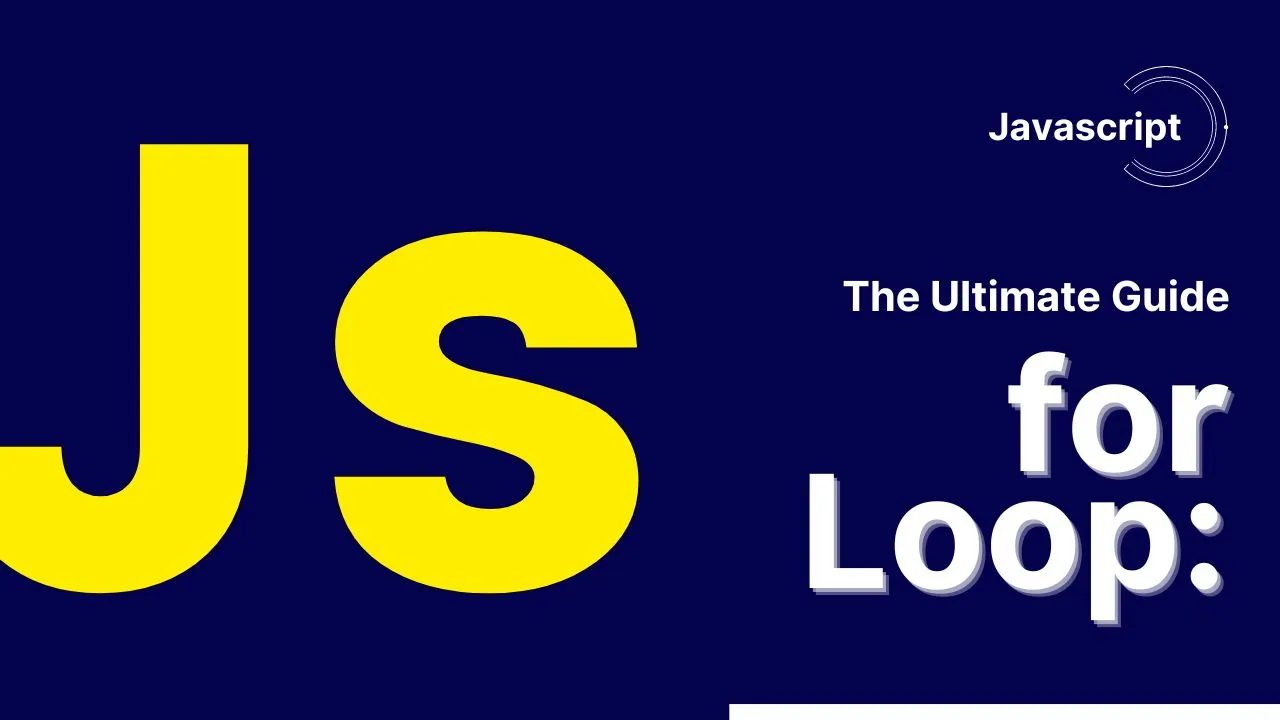JavaScript for Loop: The Ultimate Guide
In programming, loops are used to repeat a block of code.
For example, if you want to show a message 100 times, then you can use a loop. It's just a simple example; you can achieve much more with loops.
This tutorial focuses on JavaScript for loop. You will learn about the other type of loops in the upcoming tutorials.
JavaScript for loop
The syntax of the for loop is:
for (initialExpression; condition; updateExpression) {
// for loop body
}Here,
- The initialExpression initializes and/or declares variables and executes only once.
- The condition is evaluated.
- If the condition is
false, theforloop is terminated. - If the condition is
true, the block of code inside of theforloop is executed.
- If the condition is
- The updateExpression updates the value of initialExpression when the condition is
true. - The condition is evaluated again. This process continues until the condition is
false.
 Flowchart of JavaScript for loop
Flowchart of JavaScript for loop
Example 1: Display a Text Five Times
// program to display text 5 times
const n = 5;
// looping from i = 1 to 5
for (let i = 1; i <= n; i++) {
console.log(`I love JavaScript.`);
}Output
I love JavaScript.
I love JavaScript.
I love JavaScript.
I love JavaScript.
I love JavaScript.Here is how this program works.
| Iteration | Variable | Condition: i <= n | Action |
|---|---|---|---|
| 1st | i = 1n = 5 | true | I love JavaScript. is printed. i is increased to 2. |
| 2nd | i = 2n = 5 | true | I love JavaScript. is printed. i is increased to 3. |
| 3rd | i = 3n = 5 | true | I love JavaScript. is printed. i is increased to 4. |
| 4th | i = 4n = 5 | true | I love JavaScript. is printed. i is increased to 5. |
| 5th | i = 5n = 5 | true | I love JavaScript. is printed. i is increased to 6. |
| 6th | i = 6n = 5 | false | The loop is terminated. |
Example 2: Display Numbers from 1 to 5
// program to display numbers from 1 to 5
const n = 5;
// looping from i = 1 to 5
// in each iteration, i is increased by 1
for (let i = 1; i <= n; i++) {
console.log(i); // printing the value of i
}Output
1
2
3
4
5Here is how this program works.
| Iteration | Variable | Condition: i <= n | Action |
|---|---|---|---|
| 1st | i = 1n = 5 | true | 1 is printed. i is increased to 2. |
| 2nd | i = 2n = 5 | true | 2 is printed. i is increased to 3. |
| 3rd | i = 3n = 5 | true | 3 is printed. i is increased to 4. |
| 4th | i = 4n = 5 | true | 4 is printed. i is increased to 5. |
| 5th | i = 5n = 5 | true | 5 is printed. i is increased to 6. |
| 6th | i = 6n = 5 | false | The loop is terminated. |
Example 3: Display Sum of n Natural Numbers
// program to display the sum of natural numbers
let sum = 0;
const n = 100
// looping from i = 1 to n
// in each iteration, i is increased by 1
for (let i = 1; i <= n; i++) {
sum += i; // sum = sum + i
}
console.log('sum:', sum);Output
sum: 5050Here, the value of sum is 0 initially. Then, a for loop is iterated from i = 1 to 100. In each iteration, i is added to sum and its value is increased by 1.
When i becomes 101, the test condition is false and sum will be equal to 0 + 1 + 2 + ... + 100.
The above program to add sum of natural numbers can also be written as
// program to display the sum of n natural numbers
let sum = 0;
const n = 100;
// looping from i = n to 1
// in each iteration, i is decreased by 1
for(let i = n; i >= 1; i-- ) {
// adding i to sum in each iteration
sum += i; // sum = sum + i
}
console.log('sum:',sum);This program also gives the same output as the Example 3. You can accomplish the same task in many different ways in programming; programming is all about logic.
Although both ways are correct, you should try to make your code more readable.
JavaScript Infinite for loop
If the test condition in a for loop is always true, it runs forever (until memory is full). For example,
// infinite for loop
for(let i = 1; i > 0; i++) {
// block of code
}In the above program, the condition is always true which will then run the code for infinite times.
In the next tutorial, you will learn about while and do...while loop.
- This blog post was originally published at:https://www.programiz.com/
